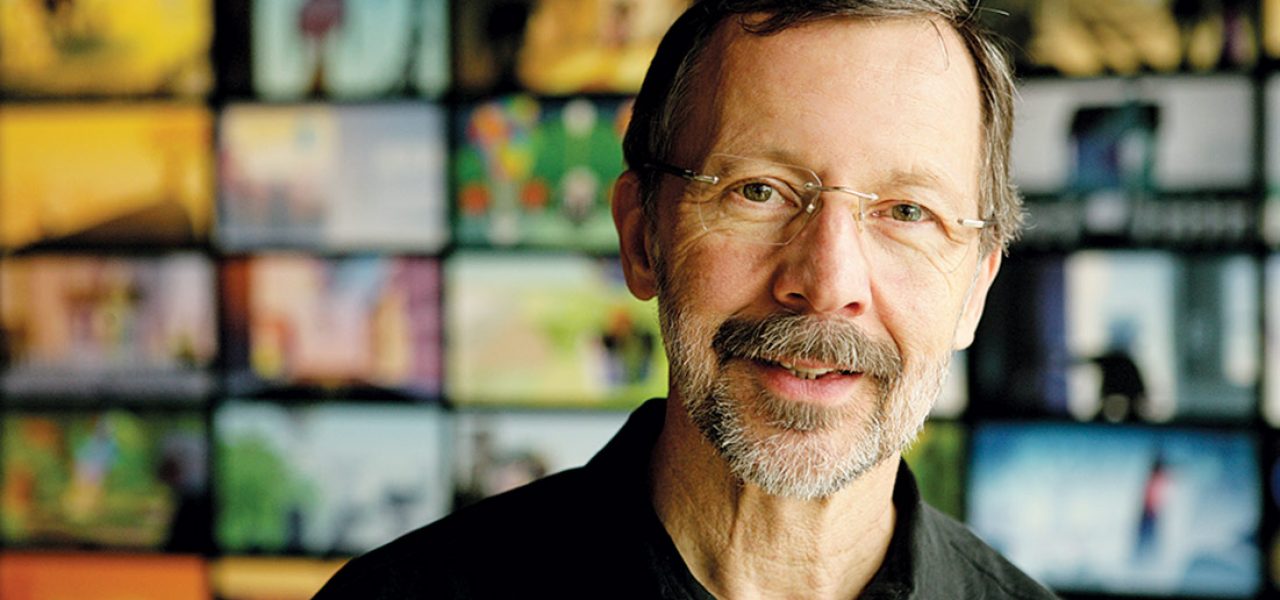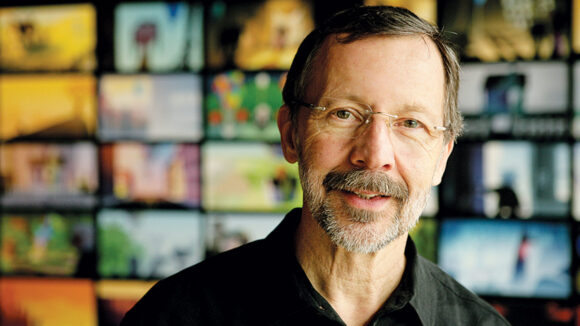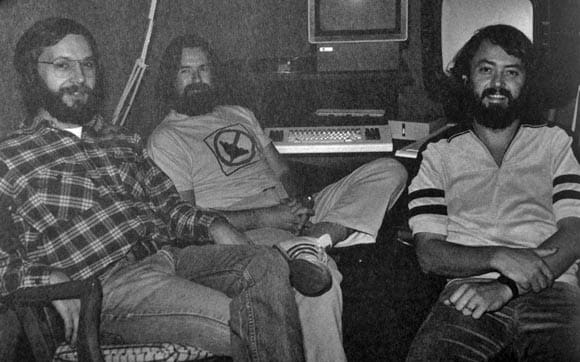

Pixar and Disney Animation President Ed Catmull Retiring At End Of 2018
Ed Catmull, co-founder of Pixar and current president of Walt Disney and Pixar Animation Studios, is retiring. He is perhaps the most complicated figure in the American animation industry: both a technical visionary who helped pioneer computer animation and build an industry from the ground up, as well as the unapologetic ringleader of a widespread wage-fixing scheme that impacted (and continues to impact) the earning potential of thousands of workers in the feature animation industry.
Catmull, 73, has announced plans to step down as president at the end of this year, though he will continue to serve in an advisory role until July 2019. Pixar president Jim Morris and Walt Disney Animation Studios president Andrew Millstein will continue in their respective roles, reporting to Walt Disney Studios president Alan Bergman. Reports indicate that Disney will not seek a replacement for Catmull’s position.
Pete Docter and Jennifer Lee will continue to creatively lead Pixar and Disney animation studios respectively in their roles as chief creative officer.
Here are the complete statements released by the Walt Disney Company for Catmull’s retirement announcement:
Ed Catmull: “Never in my wildest imagination could I have conceived of the path or the extraordinary people I have worked with over all of these years – the twists and turns, the ups and downs, along with exhilarating passion, talent, and dedication that have led to something extraordinary, something that has an enduring impact in the world. From the request of George Lucas to bring technology to the film industry, to the vision of Steve Jobs, and the extraordinary freedom provided by Bob Iger, Alan Horn, and Alan Bergman, we continue to dream of stories and ways of making those stories that always surprise. I have the mixed emotions that come with stepping away from a group of people I love, but also with the utmost pride and pleasure that we now have at both Pixar and Disney Animation the most dedicated and imaginative leaders I have worked with.”
Bob Iger, Walt Disney Company Chairman and CEO: “Ed Catmull’s impact on the entertainment industry is immeasurable. A pioneer of the intersection of creativity and technology, Ed expanded the possibilities for storytellers along with the expectations of audiences. We’re profoundly grateful for his innumerable contributions, ranging from his pivotal, groundbreaking work at Lucasfilm and Pixar to the exceptional leadership he brought to Pixar and Walt Disney Animation over the last 12 years, and we wish him the best in his well-deserved retirement.”
Alan Horn, Chairman, Walt Disney Studios: “Ed is a one-of-a-kind talent, a genius who sees beyond the ordinary to the extraordinary. His unique perspective and invaluable leadership have fostered the creation of films and technologies that will stand the test of time.”
To give the most basic sense of Catmull’s role in the development of computer graphics, he and his technical partner Fred Parke produced one of the first-ever pieces of cgi-rendered imagery while they were graduate students in 1972.
Since the 1970s, Catmull founded three centers for computer graphics research – the Computer Graphics Lab at the New York Institute of Technology, the Graphics Group in the Computer Division of Lucasfilm, and Pixar Animation Studios, the latter studio which he co-founded with Steve Jobs and Alvy Ray Smith.
Many of the fundamental technologies that allow artists and technologists to produce computer animated films were pioneered under Catmull’s purview at one of these centers. Such advances include image compositing, motion blur, subdivision surfaces, cloth simulation and rendering techniques, texture mapping, and the z-buffer.

“Ed is someone you can say who made the industry,” former Pixar director Jan Pinkava (Geri’s Game) and current creative director of Google Spotlight Stories, told Cartoon Brew at the VIEW Conference in Turin, Italy, upon hearing the news of Catmull’s retirement.
Catmull himself is one of the architects of Renderman rendering software, which has been used in over 90% of Academy Award winners for Visual Effects over the past 20 years.
Working with Disney in the 1980s, Catmull’s Pixar helped develop the Computer Animation Production System (CAPS) technology that allowed Disney to switch from hand-painted cels to digital ink-and-paint. The tech was used on films like The Rescuers Down Under, Beauty and the Beast, Aladdin, and The Lion King, all the way through Home on the Range.
Catmull has been honored with five Academy Awards, including two Oscars for his work. He also received the ACM SIGGRAPH Steven A. Coons Award for his lifetime contributions in the computer graphics field, the Progress Medal and the Fuji Gold Medal awards from the Society of Motion Picture and Television Engineers, and ASIFA-Hollywood’s Ub Iwerks Award for technical advancements in the art or industry of animation. Additionally, he was the recipient of the IEEE’s John von Neumann Medal for fundamental contributions to computer graphics and a pioneering use of computer animation in motion pictures.
The factor that complicates — and in the eyes of an increasing number, tarnishes — Catmull’s brilliant legacy as a computer scientist is his role as a businessman in animation. Dating back to his earliest days at Pixar, Catmull schemed with competing companies to artificially suppress advancement opportunities and wages for animation and tech workers, preventing them the freedom to seek higher salaries by moving to other studios.
In those early days, perhaps such arrangements made logical (if not ethical or legal) sense in the evolving and small industry of computer graphics, but as the cg feature animation industry exploded into a multi-billion dollar enterprise employing tens of thousands of people, Catmull’s continuation of his early business practices has had a profoundly negative effect on the livelihood of workers in the animation business. To understand in practical terms how Catmull’s actions affected artists, here is an example.
A class-action lawsuit launched by animation workers in 2015 alleged violations of federal antitrust laws and eventually led all of the studios named in the lawsuit, including Disney, Pixar, and Lucasfilm, to offer settlement deals. The Walt Disney Company’s portion of the settelement to plaintiffs totaled $100 million.
Whether planned or unplanned, Catmull’s departure from Pixar and Disney on December 31, 2018 coincides with the official departure date of Pixar’s former chief creative officer John Lasseter. It’s the end of an era, and a changing of the guard in the Pixar timeline unlike any that has happened before.
The decline and fall of Lasseter will be another defining moment of Catmull’s management of Pixar. Catmull has never commented on why he allowed Lasseter to misbehave at Pixar and Disney for as long as he did. And by reported accounts, he had awareness of what Lasseter was doing and worked to mitigate the negative impacts of Lasseter’s behavior. Catmull, who has written a book on inspirational corporate management, Creativity, Inc.: Overcoming the Unseen Forces That Stand in the Way of True Inspiration, clearly failed to foresee the consequences of allowing Lasseter’s bizarre behavior to continue until the situation spilled out of control and became a public scandal.
Further, as it has become more clear over the past year, the negative experiences of some women artists at Pixar extended beyond Lasseter. Under Catmull, the studio had an ingrained fraternity-like culture that ended up benefitting men and led to the exclusion of female voices in the creative decision-making process, a situation that is not necessarily unique in the animation industry but more pronounced that it happened at the most lauded animation studio of the contemporary era.
Catmull’s legacy is complex, if anything. It will take time for people to figure out how to reconcile his impeccable credentials as a technologist and scientist with his checkered history as a businessman and corporate leader.

.png)